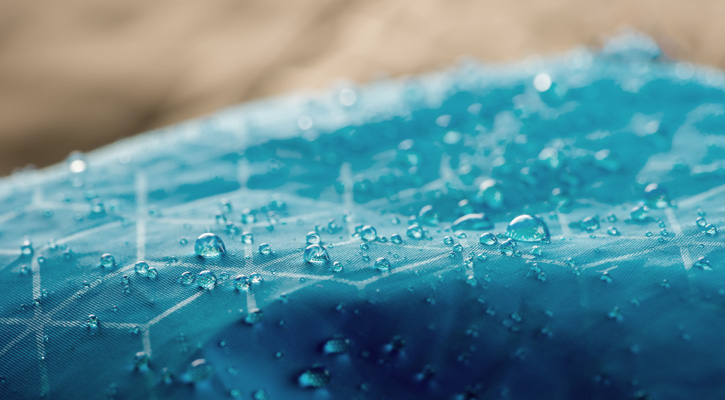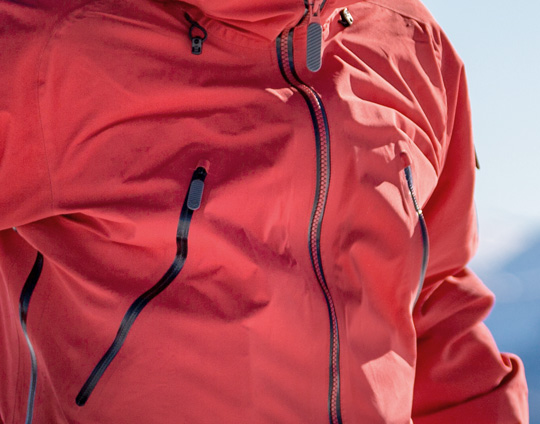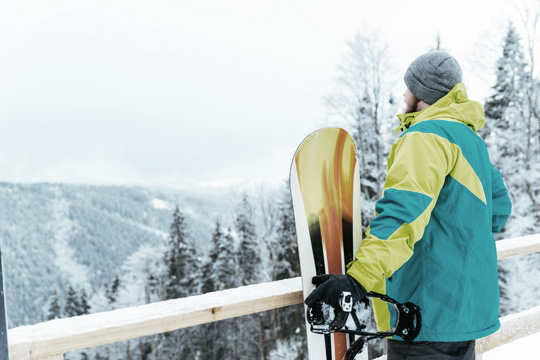
Are you tired of being confused by the terms “waterproof,” “water-resistant,” and “water-repellent” when shopping for a new jacket? You’re not alone.
With so many options available, it can be difficult to know which type of jacket is right for you. However, when it comes to staying dry in wet weather, the water resistance of a jacket is crucial.
In this article, we’ll break down the differences between waterproof, water-resistant, and water-repellent jackets, so you can make an informed decision when purchasing your next coat.
Let’s begin!
Key Points:
- The water resistance, breathability, and type of seams are critical factors that affect a jacket’s performance.
- Waterproof jackets are made of highly water-resistant fabric and are required in areas with frequent rainfall and snowfall.
- Water-resistant jackets are made of fabrics that have some degree of resistance to water and are suitable for dry conditions with occasional rainfall.
- Water-repellent jackets can repel water entirely by washing off the water drops that fall on them due to the outer coating being hydrophobic.
- Nanotechnology coating is commonly used to make a jacket water-repellent, with DWR being the most popular.
1. Determining Water-Resistance

In case you have encountered similar articles regarding this subject matter, you may be acquainted with the Static-Column test. To elaborate, a measuring tube or column is positioned above a textile and left undisturbed (static).
To measure the waterproof capacity of a fabric, the tube, which has a diameter of 1 inch, is filled with water continuously until the moment the textile starts to leak.
At this point, the water level inside the column is marked, and this indicates the waterproof rating of the fabric.
Typically, a jacket must have a minimum waterproof rating of 10,000mm to qualify as waterproof. If the rating is lower than that, the jacket must be equipped with a waterproof membrane to prevent water penetration.
Read also: Hardshell vs Rain Jacket: The Difference
2. Breathability Is Important Too
Water resistance is just one of the many aspects to consider, as breathability is also a critical factor that affects a jacket’s long-term performance. Breathability refers to the ability of a fabric to allow air to flow through it, thereby preventing overheating and accumulation of perspiration.
Not all jackets provide adequate breathability, which may be attributed to their weather-resistant features, particularly water resistance.
But why is breathability so important, and how is it related to water resistance? The answer is quite simple. A highly water-resistant jacket, which is typically classified as waterproof, is usually made of denser fabric that is less porous.
In some cases, the outer shell may include membranes and various fabric technologies that effectively resist wind and rain, but also isolate the jacket and obstruct airflow. This is often observed in low-end ski and snowboarding jackets that are required to be waterproof but lack breathability due to the use of low-tech membranes to reduce costs.
As a general rule, the more water-resistant a jacket is, the less breathable it becomes. However, some argue that this is not always the case, and we agree. Nevertheless, highly waterproof and breathable jackets are often priced very high.
3. Seams Are Also Important

You may have encountered terms such as “Sealed seams” or “Critically sealed seams” while researching jacket features. Although some may overlook this aspect, we strongly advise against doing so. Stitched seams without any taping or sealing will allow water to seep through, even if your jacket is rated as “Waterproof”.
The two terms mentioned above differ in terms of placement. Critically sealed seams imply that only the upper part of the jacket has sealed seams, leaving the rest of the body vulnerable to water. Therefore, it is best to opt for a jacket with fully sealed seams.
Typically, there are two types of sealing: taped seams, where waterproof tape is applied over the stitching, and welded seams, where there is no stitching, instead, the jacket is bonded together using sonic bonding or glue, making it more resistant.
So, which seam is the best? If you reside in generally dry areas, a critically seam sealed jacket should suffice. But, if you live in areas with frequent rainfall or snowfall, we recommend a fully seam sealed jacket.
It’s essential to conduct thorough research beforehand and consider factors such as location, weather, and the type of jacket required.
4. Waterproof Jackets
Let’s begin with waterproof jackets, which are highly sought after by everyone.
These jackets are made of highly water-resistant fabric, which is treated with different fabric technologies to provide complete resistance against water and wind while remaining breathable.
Hardshell jackets and ski jackets are examples of waterproof jackets. A jacket labeled as “Waterproof” implies that regardless of the weather conditions, whether it’s pouring or snowing, the outer membrane will not allow any dampness to seep through, keeping you dry throughout.
However, there are a few things to consider. Apart from breathability, which we will discuss shortly, it’s crucial to pay attention to the water column and seams. As we’ve previously mentioned, it’s essential to check for these two things in the label or jacket description online.
Why is that important? Even if a jacket is labeled as waterproof, if the seams are unsealed, the water column is too low, and there’s no sign of a membrane or fabric technology, it’s not worth investing in.
Waterproof jackets are typically required in areas with frequent rainfall and snowfall during winter. However, in mild weather, a fully waterproof jacket may be unnecessary and could cause overheating issues, particularly if it lacks breathability. Excessive sweating is not only unpleasant but also poses a risk in extremely low temperatures.
For sports enthusiasts, we recommend avoiding fully waterproof jackets unless they come with highly breathable technology such as Windstopper or Gore-Tex. However, a fully waterproof jacket is necessary for skiing and snowboarding.

5. Water-Resistant Jackets
Jackets that are water-resistant are usually made of fabrics that have some degree of resistance to water, such as Nylon or are difficult to wet, such as Polyester. These fabrics are lightly coated with various substances to form a protective layer that enhances their endurance against light rainfall or damp conditions.
Water-resistant jackets are typically lightweight and breathable, making them ideal for dry conditions with occasional rainfall. They are particularly suitable for spring and early autumn.
These jackets usually have either critically sealed seams or stitched seams. High-end products will typically have fully taped or welded seams to provide better protection against rain.
Common types of water-resistant jackets include soft shells, most down jackets, and some fleece jackets. These jackets are ideal for sports activities, particularly soft shells, which are designed for maximum breathability and comfort during movement.
6. Water-Repellent Jackets
Many people often confuse water-resistant jackets with water-repellent jackets, assuming they are the same. However, there is a difference between the two types of water-resistant fabrics.
While water-resistant jackets resist water for a certain amount of time, water-repellent jackets can repel water entirely by washing off the water drops that fall on them. This is due to the outer coating being hydrophobic.
Water-repellent jackets are typically made of the same fabric as water-resistant jackets, but they differ in the outer coating. Nanotechnology coating is commonly used to make a jacket water-repellent, with DWR (durable water repellent) being the most popular.
These coatings create a film that enhances the jacket’s ability to withstand wetter conditions, not just in terms of rainfall quantity but also duration.
Some soft shells and more breathable hard shells usually fall under the water-repellent category.
7. Conclusions
That concludes our discussion on water-resistant jackets. We hope that this article has provided clarity on what to look for in a quality jacket, not just in terms of water resistance.
